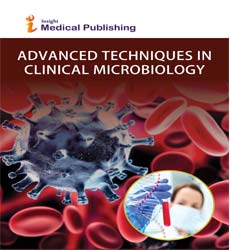Use of surface-sensors (sch) for listeria monocytogenes direct monitorization in food industries
Abstract
Cleaning and disinfection procedures are critical and must be performed to established guidelines otherwise they potentially allow cross-contamination to occur, which not only reduces a product's shelf-life but also increases the risk of foodborne diseases related to the presence of pathogens (Moore & Griffith, 2002; Reij & Den Aantrekker, 2004). A surveillance programme to control foodborne infections and intoxications in Europe reported that the main contributing factor to outbreaks was cross-contamination (Tirado & Schmidt, 2001), indicating that enormous efforts must be made to control this otherwise it could become an increasing tendency over time (Giaouris et al., 2014). Listeria monocytogenes is a foodborne pathogen that is considerably significant for the food industry (Jemmi & Stephan, 2006; Larsen et al., 2014; Ripolles-Avila et al., 2018; Todd & Notermans, 2011). For instance, listeriosis is the only foodborne disease that has shown a notable increasing tendency in the EU/EEA over the last 5 years (2012â??2016), with a 9.3% increment in confirmed cases between 2015 and 2016 (EFSA-ECDC, 2017). Although this percentage of cases may seem low compared to other pathogens, its high mortality rate amongst human populations with vulnerable immune systems, the elderly and its connection with stillbirth and miscarriage makes it a considerable public health issue (Lourenço et al., 2012). Surface sampling is absolutely essential for evaluating and controlling the microbial contamination of food contact surfaces. Surface sampling techniques have until now been based on swabs or sponges and consist of extracting the microorganisms from the surface and contact plates (Kasuga et al., 2011; Valentine et al., 2008). However, these traditional methods can present some standardization problems when collecting samples from the different surfaces found in the food industry. With the goal of overcoming these standardization problems, a surface sensor named SCH (Hygiene Control Sensor, Premiumlab) was developed to monitor the biological contamination of surfaces and offer an alternative to traditional methods when analyzing product safety and quality (Ripolles-Avila et al., 2018). When using these sensors, the microorganisms present on the surfaces must be recovered (González-Rivas et al., 2018; Ripolles-Avila et al., 2019). The main aim of the present study was to implement and assess this novel technology to evaluate the microbiological contamination of surfaces. For that, different industrial surfaces in a meat processing plant were evaluated through implementing the sensor-based sampling system, with a focus on detecting L. monocytogenes. The results obtained showed that the areas considered as major contributors to microbial contamination were three of the sampled floors and the storage cabinet for tools, demonstrating to be important sources of possible cross-contamination. A total of four L. monocytogenes presences were obtained during sampling. A direct relation was observed between aerobic counts and detecting L. monocytogenes, and three possible hypotheses were formulated to explain the connection. Last, a safety zone marking the limits beyond which the surface can be considered as a safety risk was established. The use of SCH sensors as a surface sampling system for the food industry have been shown to work effectively and with relative ease.
Open Access Journals
- Aquaculture & Veterinary Science
- Chemistry & Chemical Sciences
- Clinical Sciences
- Engineering
- General Science
- Genetics & Molecular Biology
- Health Care & Nursing
- Immunology & Microbiology
- Materials Science
- Mathematics & Physics
- Medical Sciences
- Neurology & Psychiatry
- Oncology & Cancer Science
- Pharmaceutical Sciences
